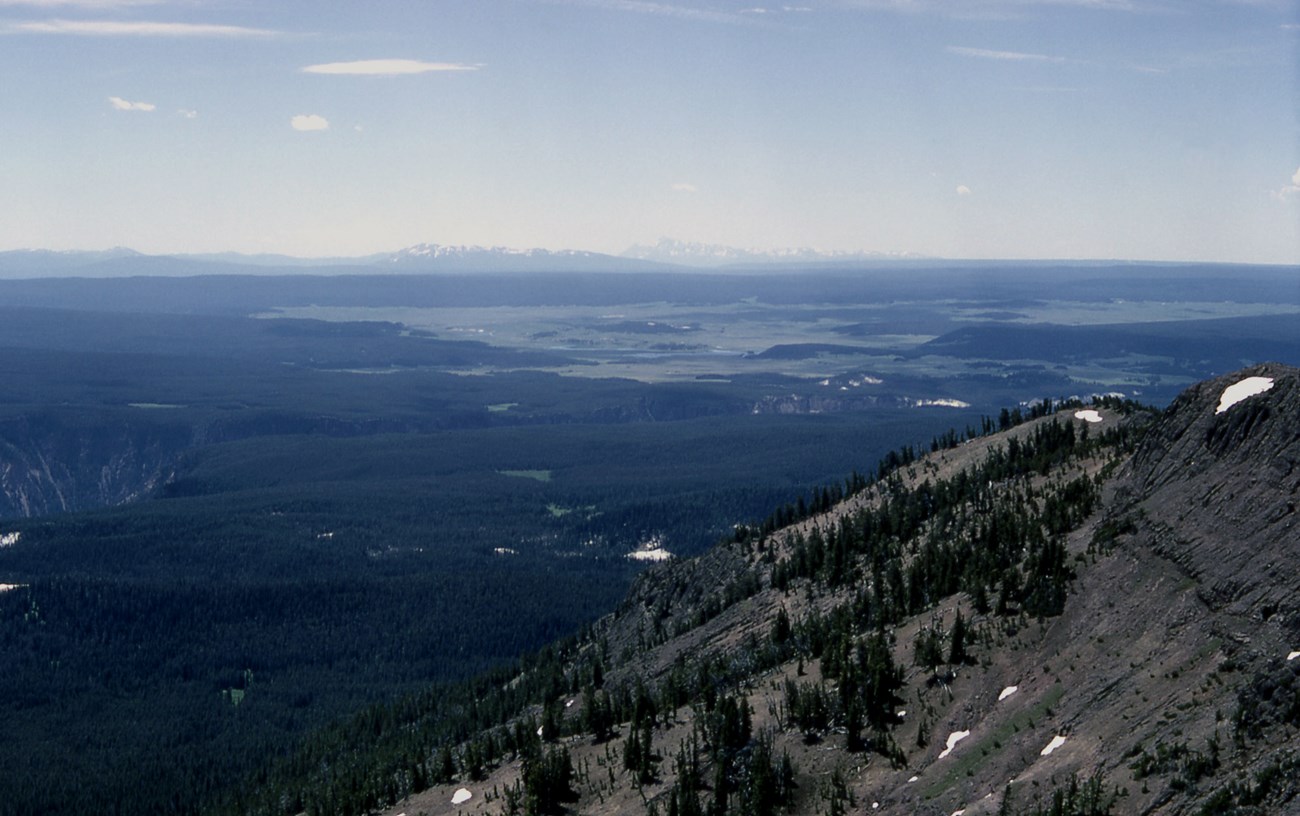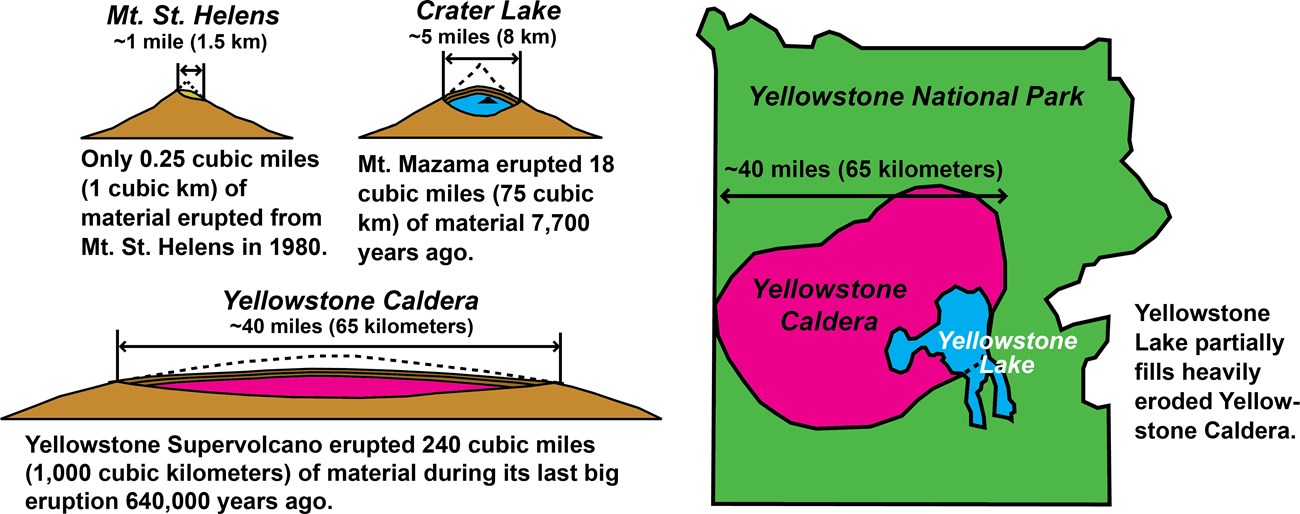Part of a series of articles titled Volcanic Eruption Styles.
Previous: Plinian Eruptions
Article

NPS photo by John Good.
Ultra-Plinian eruptions are the largest of all volcanic eruptions, and are so voluminous that large calderas form above vacated magma chambers. These eruptions are more intense and have a higher eruption rate than Plinian ones and form higher eruption columns. These eruptions produce thick pyroclastic flows that cover vast areas and may produce widespread ash-fall deposits.

Modified from “Beauty from the Beast: Plate Tectonics and the Landscapes of the Pacific Northwest,” by Robert J. Lillie, Wells Creek Publishers, 92 pp., 2015, www.amazon.com/dp/1512211893.
The centers that produce the largest eruptions (e.g., that have a volume in excess of 200 cubic miles or 1,000 cubic kilometers) are known as supervolcanoes. These supervolcanoes are typically massive calderas, such as the Lava Creek eruption 640,000 years ago that formed the Yellowstone caldera which covers an area 30 miles by 45 miles (50 by 70 km).
Typical magma composition: silicic (rhyolitic)
Description: Colossal, Mega-colossal, Apocalyptic
Eruption Products: tephra, pumice, fallout ash, pyroclastic flows
National Park examples: Mount Mazama in Crater Lake National Park, and the entirety of Yellowstone National Park
Crater Lake National Park (CRLA), Oregon—[CRLA Geodiversity Atlas] [CRLA Park Home] [CRLA npshistory.com]
USGS Cascades Volcano Observatory—Crater Lake
Yellowstone National Park (YELL), Idaho, Montana, and Wyoming—[YELL Geodiversity Atlas] [YELL Park Home] [YELL Volcano] [YELL npshistory.com]
USGS Yellowstone Volcano Observatory—Yellowstone Plateau volcanic field
Part of a series of articles titled Volcanic Eruption Styles.
Previous: Plinian Eruptions
Last updated: April 14, 2023